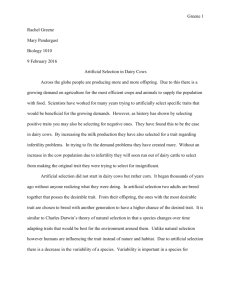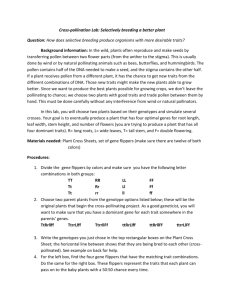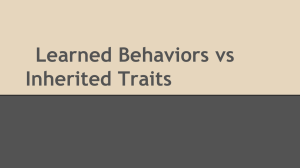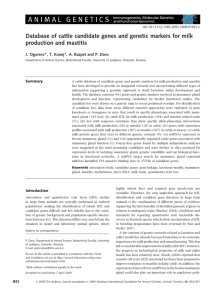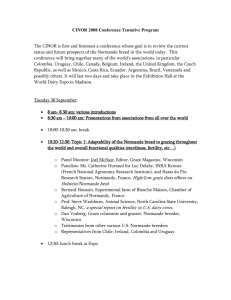Article Summary - Rachel`s E
advertisement
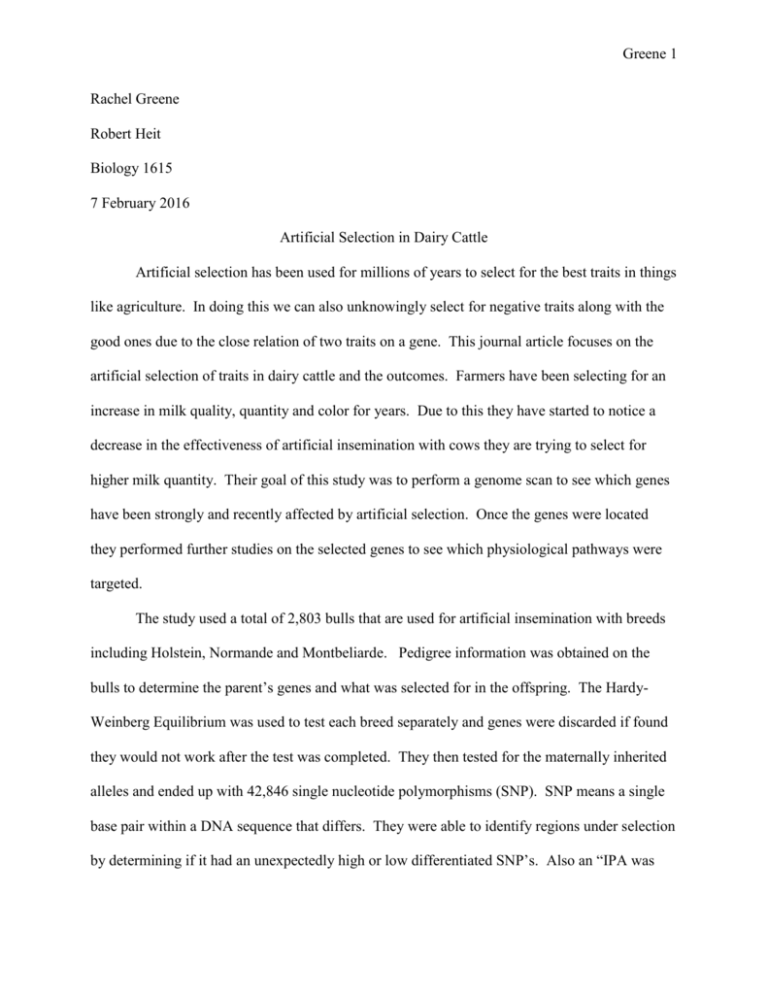
Greene 1 Rachel Greene Robert Heit Biology 1615 7 February 2016 Artificial Selection in Dairy Cattle Artificial selection has been used for millions of years to select for the best traits in things like agriculture. In doing this we can also unknowingly select for negative traits along with the good ones due to the close relation of two traits on a gene. This journal article focuses on the artificial selection of traits in dairy cattle and the outcomes. Farmers have been selecting for an increase in milk quality, quantity and color for years. Due to this they have started to notice a decrease in the effectiveness of artificial insemination with cows they are trying to select for higher milk quantity. Their goal of this study was to perform a genome scan to see which genes have been strongly and recently affected by artificial selection. Once the genes were located they performed further studies on the selected genes to see which physiological pathways were targeted. The study used a total of 2,803 bulls that are used for artificial insemination with breeds including Holstein, Normande and Montbeliarde. Pedigree information was obtained on the bulls to determine the parent’s genes and what was selected for in the offspring. The HardyWeinberg Equilibrium was used to test each breed separately and genes were discarded if found they would not work after the test was completed. They then tested for the maternally inherited alleles and ended up with 42,846 single nucleotide polymorphisms (SNP). SNP means a single base pair within a DNA sequence that differs. They were able to identify regions under selection by determining if it had an unexpectedly high or low differentiated SNP’s. Also an “IPA was Greene 2 used to organize genes showing evidence of selection into networks of interacting genes and to identify pathways containing functionally related genes” (12) to find the physiological pathways that were targeted. In Norwegian Red cattle they found that the gene controlling milk production and calving difficulty were found in the same region suggesting that selecting for high milk quality is also selecting for breeding problems. In the Normande and Montbeliarde breeds they found a high selection of the gene controlling pelvis morphology. There were also able to locate another gene highly selected for in all of the breeds that determines coat color in cattle. They believe the gene for coat color was one of the first selected for due to the importance of “coloration pattern for herd-book registration” (5). Since all three breeds were being bred to achieve similar qualities, they believed that the genes would be involved in biological networks as well. They found in Normande and Montbeliarde they contained the growth hormone gene while the Holstein had Insulin Growth Factor gene. This shows that breeders were after the same goal and targeting the same pathways because both growth hormone and insulin growth factor control milk production. Some of the genes affecting milk production also affected other things like reproduction, cell death, and it also may contribute to steroid-dependent cancers. Milk metabolism and reproduction have a negative relationship to each other that has been reported in highly producing dairy cows. This shows that these two traits are inter-related to each other at a genetic level. Due to the close relationship of these two traits on a genetic level it is preventing selection of both high reproduction rates and milk production. These genes were not overlapping however which suggests that there can be different solutions to a similar breeding goal. By practicing artificial selection in dairy cattle we have created some harmful effects to the cows when selecting for other traits. It is important to understand what effects Greene 3 artificial selection may have when practicing it and also understanding that there may be some negative selection as well that was not planned for. Works Cited Flori, Laurence, Sébastien Fritz, Florence Jaffrézic, Mekki Boussaha, Ivo Gut, Simon Heath, Jean-Louis Foulley, and Mathieu Gautier. "The Genome Response to Artificial Selection: A Case Study in Dairy Cattle." Ed. Henry Harpending. PLoS ONE 4.8 (2009): 1-13. Print.


